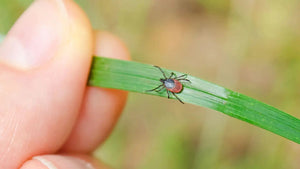
10 bistvenih dejstev o klopih
Naučite se, kako odganjati klope, kako lahko širijo bolezni, kot je borelioza, in kako jih odstraniti.
1. Kaj so klopi?
Klopi pravzaprav niso žuželke, so pajkovci – tesneje povezani s pajki. Toda repelent proti insektom, ki vsebuje ustrezne sestavine (npr. Eucalyptus citriodora), kot je BubbleBite Spray ali Cream, še vedno učinkovito odganja klope in pomaga preprečevati ugrize klopov.
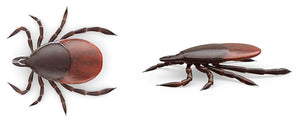
2. Kako vas klopi najdejo?
Ker ne morejo leteti ali skakati, se številne vrste klopov povzpnejo na konice trav in čakajo. Ko zaznajo mimoidočega gostitelja, preprosto splezajo na krov. Že samo metanje sence na nekatere klope lahko odda vašo prisotnost. Klopi lahko zaznajo živali tudi po zadahu, vonju, toploti, vlagi ali tresljajih, ki jih povzroča njihovo gibanje.
3. Kako klopi širijo boreliozo?
Klopi širijo bolezni, kot je lymska borelioza, tako da ugriznejo osebo ali žival, okuženo z boleznijo, nato pa jo s klopovo slino prenesejo svojemu naslednjemu gostitelju. Klopi se morajo hraniti s krvjo, da preživijo vsako fazo življenja, od jajčeca do ličinke, nimfe do odraslega. Če eden od teh obrokov vsebuje patogen, ki se prenaša s krvjo (ali mikrob, ki povzroča bolezen), ga lahko klop prenese, ko se hrani z novim gostiteljem v njegovi naslednji življenjski dobi.
4. Kako se pregledati/zaznati klopa?
Po vrtnarjenju, kampiranju, pohodništvu ali igranju na prostem je dobro, da otrokom in hišnim ljubljenčkom, ko pridejo v prostor, pregledate celotno telo. Uporabite ogledalo ali partnerja in bodite posebno pozorni na te dele: pazduhe, ušesa, popek, zadnji del kolen, lasišče, lase, med nogami in okoli pasu. Tuširanje v dveh urah po tem, ko ste zunaj, bo prav tako pomagalo, saj boste splaknili klope, ki še niso ugriznili.
5. Zakaj se klopi držijo našega telesa?
Ko enkrat ugriznejo, klopa ni dobro kar tako odstraniti. Da bi ostali pritrjeni med hranjenjem, številni klopi skozi hranilno cev izločajo cementu podobno snov. Klopova slina lahko tudi povzroči, da bolečina, povezana z ugrizom, ostane neopažena, kar mu omogoča, da se hrani do nekaj dni.
6. Odstranitev klopa: Kako pravilno odstraniti klopa?
S pinceto stisnite klopa zelo blizu površine kože. Trdno povlecite navzgor, vendar ne vlecite premočno. Cilj je odstraniti vse dele ust skupaj s telesom. Klopova slina lahko prenaša bolezen, zato je pomembno, da glave ne pustite za seboj, ko jo odstranite. Temeljito očistite in razkužite območje z alkoholom, jodnim pilingom, milom in vodo.
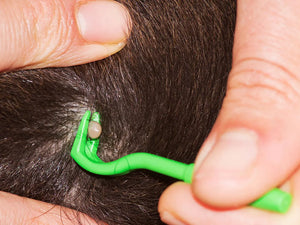
7. Kaj storiti, ko vas jugrizne klop?
Če se vam pojavijo znaki in simptomi bolezni, ki jo prenašajo klopi, kot je borelioza, obiščite svojega zdravnika za oceno. Shranjevanje klopa, ki ste ga odstranili s kože, vam lahko tudi pomaga prepoznati vrsto, različne vrste pa prenašajo različne bolezni. Zabeležite svoj ugriz tako, da klopa zaprete v vrečko za sendvič, ki jo je mogoče zapreti, skupaj z opombo, vključno z datumom in kje ste bili, ko ste bili ugriznjeni.
8. Katere vrste klopov prenašajo katere bolezni?
Različne vrste klopov prenašajo različne bolezni. Lymsko boreliozo najpogosteje širijo črnonogi klopi, znani tudi kot jelenji klopi. Skalnogorsko pegasto mrzlico širita lesni klop in rjavi pasji klop.
Poučite se o vrstah klopov na vašem območju.
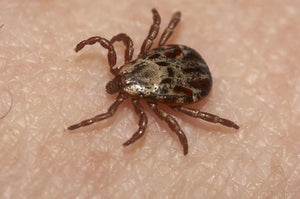
Ameriški pasji klop
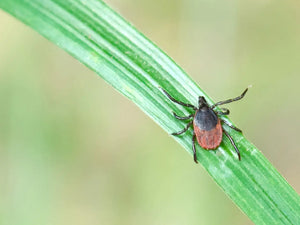
Črnonogi klop
9. Kako lahko preprečim ugrize klopov v bližini svojega doma?
Klopi lahko vdrejo na vaše dvorišče ali dom tako, da se zapeljejo na pse, mačke, miši, jelene in druge živali. Ustvarite pregrado iz lesnih sekancev ali gramoza med vašo trato in gozdnatimi površinami ter zložite les v čedne kupe stran od vašega doma, da zmanjšate populacijo klopov na svojem dvorišču. Poleg tega lahko s košnjo trate in odstranjevanjem smeti odstranite habitate za klope.
Poleg tega je eden najboljših načinov za preprečevanje ugrizov klopov izogibanje habitatom, kjer klopi živijo, kadar je to mogoče, kot so dolga trava, grmičevje, listje ali gozd. Na svojih mačkah in psih uporabite izdelke za zaščito pred klopi za hišne ljubljenčke. Nošenje repelenta proti insektom, kot je BubbleBite Anti Mosquito Spray ali BubbleBite Anti Mosquito Skin Care Cream, prav tako pomaga preprečiti ugrize klopov.
10. Kako odstraniti klope v svojem domu?
Če oblačila in opremo za kampiranje ožemate v sušilnem stroju na visoki temperaturi 10 minut, lahko uničite slepe klope.



